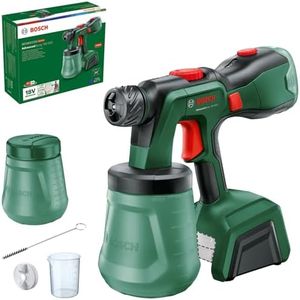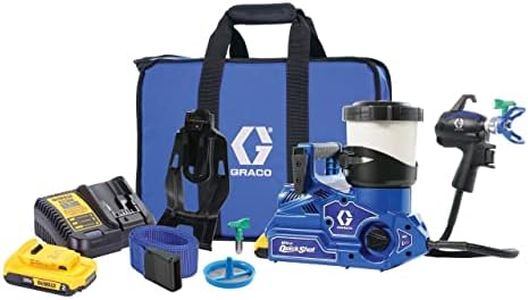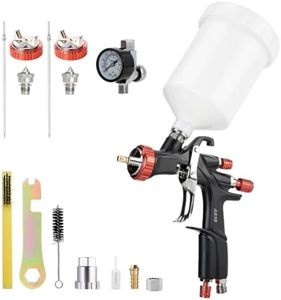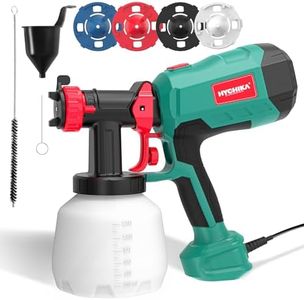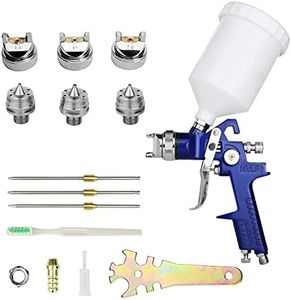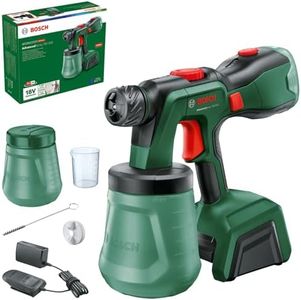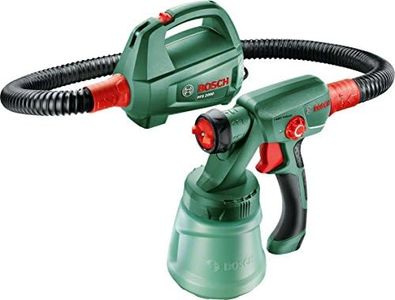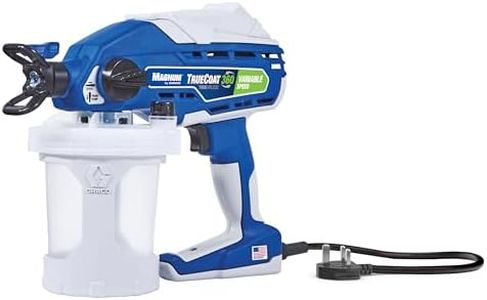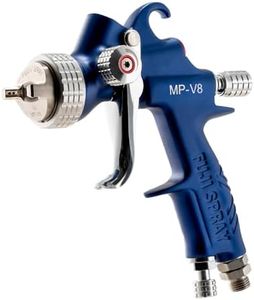We Use CookiesWe use cookies to enhance the security, performance,
functionality and for analytical and promotional activities. By continuing to browse this site you
are agreeing to our privacy policy
10 Best Paint Sprayers
From leading brands and best sellers available on the web.By clicking on a link to a third party's website, log data is shared with that third party.
Buying Guide for the Best Paint Sprayers
When choosing a paint sprayer, the goal is to find a tool that delivers a smooth finish efficiently and suits the type of projects you plan to tackle. Paint sprayers come in a variety of designs, each catering to different surfaces, types of paint, and user experience levels. Understanding the key features and specs will help you decide which sprayer matches your needs. Before deciding, think about the surfaces you’ll be painting, how much control you want, how often you plan to use the sprayer, and whether ease of cleaning is important for you.Type of SprayerType of sprayer refers to the spray mechanism the tool uses—usually airless, HVLP (high volume, low pressure), or compressed air. Airless sprayers are powerful and can cover large surfaces quickly, making them great for big outdoor projects or walls. HVLP sprayers offer more control and are better for fine finishing like cabinets or furniture because they minimize overspray. Compressed air sprayers use an air compressor and work well for detailed work, but they can be messier and use more paint. Your job size and desired finish will guide your choice: for speed on big jobs, go airless; for precision, choose HVLP; and for versatility with lots of cleanup, try compressed air.
Flow RateFlow rate, often measured in gallons per minute (GPM) or liters per minute, indicates how much paint the sprayer can push out over a period of time. Higher flow rates mean you can cover more area quickly, which is helpful for large projects, whereas lower flow rates are ideal for smaller, controlled jobs or lighter coats. If you’re mostly painting furniture, trim, or craft projects, a lower flow rate offers more precision. For decks, fences, or whole walls, a higher flow rate will save time and effort.
Adjustable PressureAdjustable pressure allows you to control the force at which paint is sprayed. This is important because different materials and paint types may require more or less pressure to apply smoothly without clogging or causing drips. High pressure can speed up coverage on big surfaces, while lower pressure gives control for more intricate work and reduces overspray. If your projects vary, pick a sprayer with easily adjustable pressure so you can adapt to each task.
Nozzle/Tip SizeNozzle or tip size determines the width and thickness of the spray pattern, which influences how the paint is distributed. Wider tips are good for large, flat areas like walls, while narrower tips are suited to detailed work like trim or corners. Some sprayers come with interchangeable tips, letting you switch based on the task. Consider the kind of painting you’ll do most—broad surfaces or detailed finishing—and select a sprayer that supports the right range of tips for your needs.
Paint CompatibilityPaint compatibility means which types and thicknesses of paint the sprayer can handle, such as latex, stains, lacquers, or oil-based paints. Some sprayers are designed only for thin materials, while others can handle thicker paints without thinning. Choosing a sprayer compatible with your preferred paints saves time and frustration. If you want to use a range of coatings, pick a versatile model or be ready to thin paint as needed.
Ease of CleaningEase of cleaning describes how simple it is to clean out paint residues from the sprayer after use. Sprayers with fewer parts and those that come apart easily are faster to clean. Some models offer features like hoses that connect to a garden tap for quick rinsing. If you value convenience and plan to use the sprayer often, prioritize easy cleaning because it will encourage you to maintain your equipment and keep it working well.
Portability and WeightPortability and weight affect how easy the sprayer is to move around and use over longer periods. Lighter, handheld models are easier to manage for small jobs or overhead work, while heavier units with wheels or backpacks suit extensive projects or outdoor areas. Think about where and how you’ll be using the sprayer most frequently—if you’ll be climbing ladders or moving around, a lightweight model will make the job much easier.
